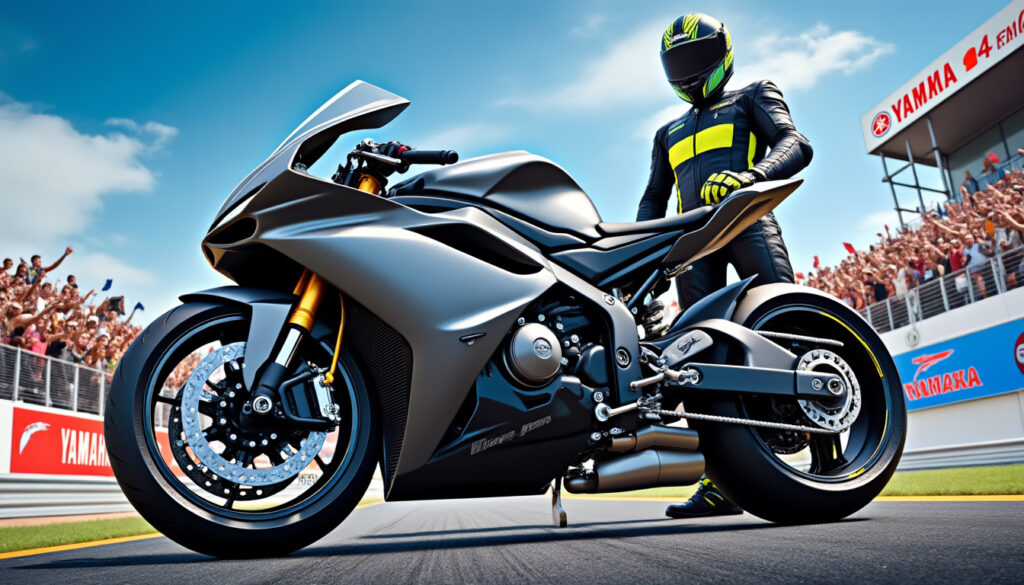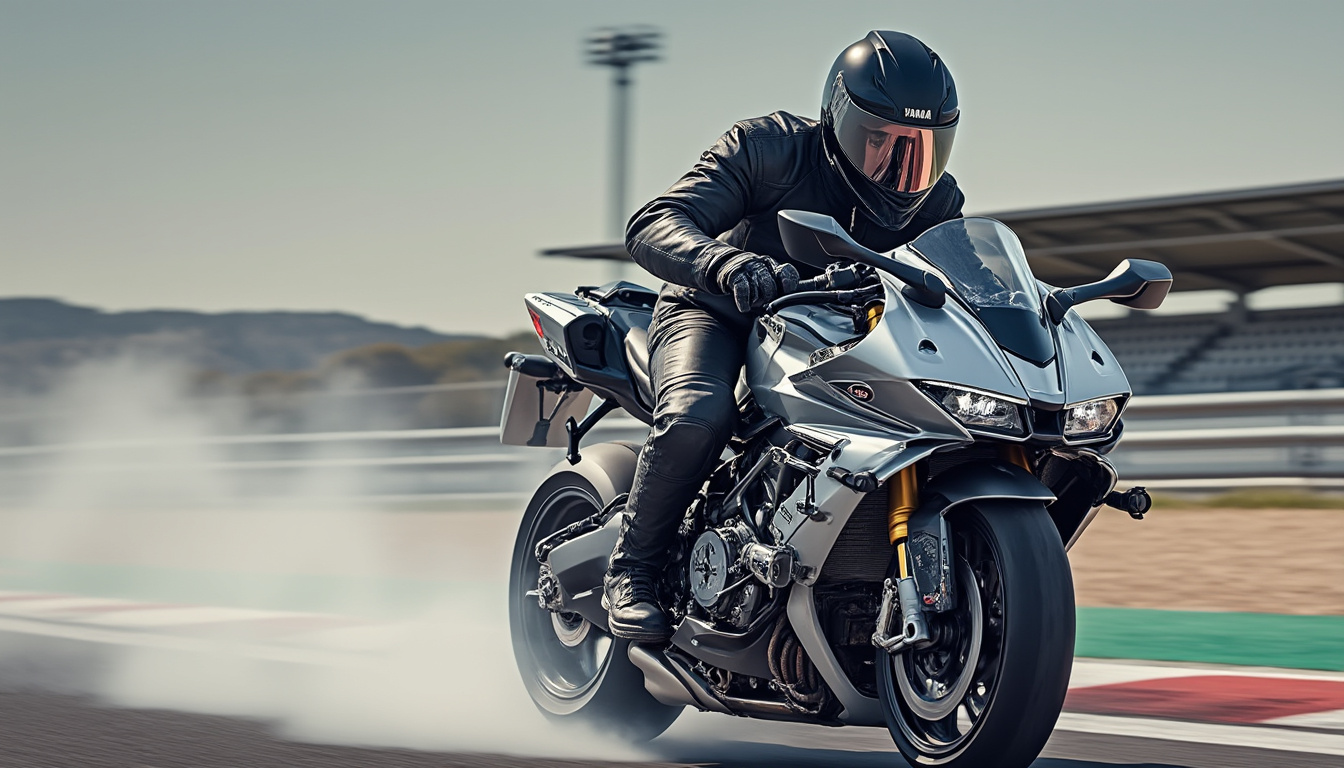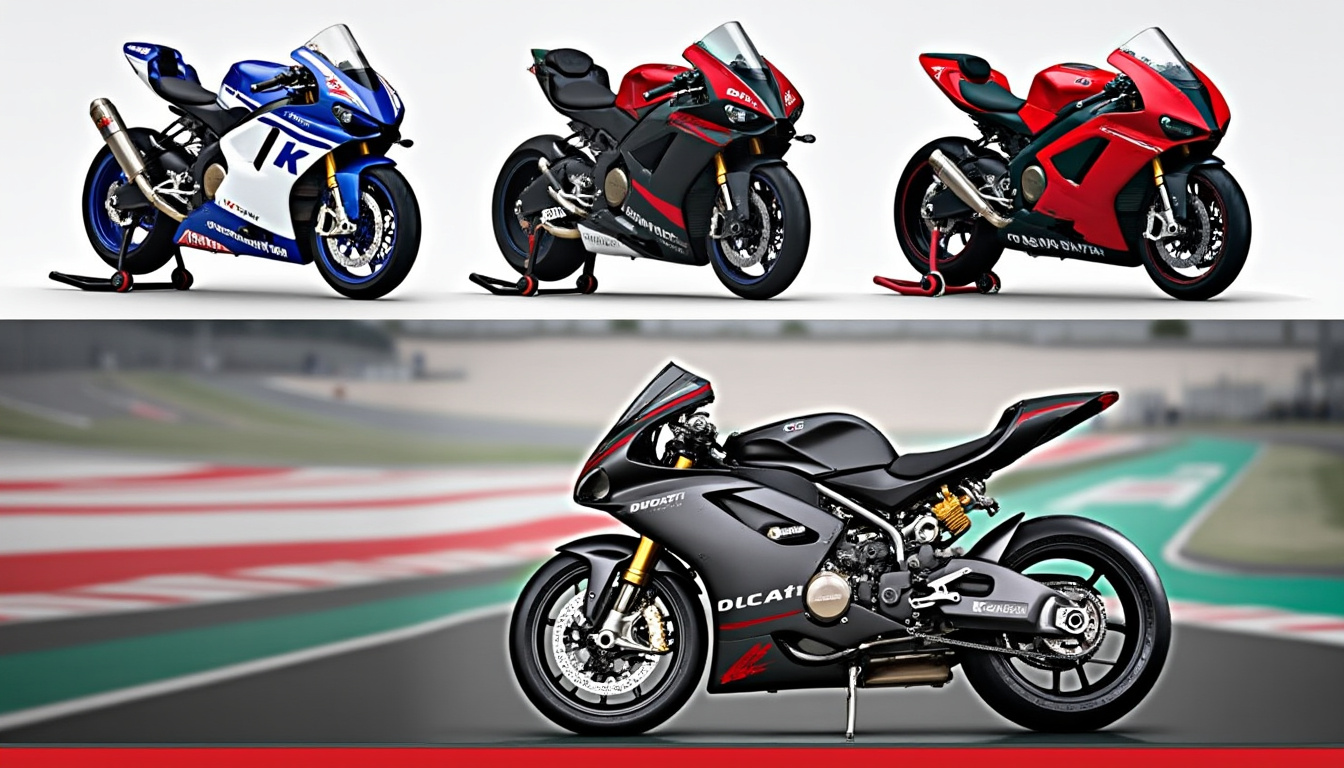The new V4 engine from Yamaha makes its debut on the track!

Yamaha, one of the giants of the motorcycle industry, is about to revolutionize the world of competition by introducing for the first time its brand new V4 engine intended for MotoGP. While rumors had been circulating for months about the development of a V4 engine, the official confirmation has finally arrived. This new engine represents a significant turning point for the brand, which is currently relying on a four-cylinder inline engine. The technical director, Massimo Bartolini, announced that testing has begun, paving the way for a promising potential future on the circuits. What does this development mean for Yamaha, and how do they stack up against their competitors such as Honda, Ducati, and KTM?
- Introduction of Yamaha's new V4 engine
- Analysis of technical and strategic issues
- Comparison with competing engines in MotoGP
- Expectations and the future of Yamaha in MotoGP
- Conclusion on the impact of this innovation on MotoGP
Introduction of Yamaha's new V4 engine
The development of Yamaha's V4 engine is a landmark step in the brand's history. Until now, Yamaha has primarily used four-cylinder inline engines, which, while effective, have become less competitive against more modern designs adopted by competitors. The announcement of the first V4 engine tests represents a paradigm shift for the Japanese company. According to Massimo Bartolini, the first tests were conducted at the Ricardo Tormo circuit in Valencia, where test riders were able to evaluate this new engine.

This engine is designed to deliver better performance, particularly in terms of power and responsiveness. Yamaha has always been perceived as an innovative brand, and this new engine block further reinforces that image. By integrating a V4 engine, Yamaha could enhance its performance in corners, a critical aspect in MotoGP. However, engineers will need to overcome several technical challenges to achieve this.
The technical characteristics of the V4 engine
- V4 architecture : Offers better weight distribution and a lower center of gravity.
- Increased power : Forecasted a significant increase compared to the previous engine.
- Improved responsiveness : Allows for faster acceleration thanks to better low-end torque.
The switch to a V4 engine is part of a trend observed in MotoGP, where more and more brands are adopting this layout to maximize on-track performance. This development is therefore both a response to competition and an attempt to revitalize Yamaha's sporting image.
Analysis of technical and strategic issues
The creation of a V4 engine by Yamaha is not just a simple technical update; it is a deeply thought-out strategy that could redefine the brand's identity within MotoGP. Indeed, competition is becoming increasingly fierce, with players like Ducati, which has already proven the effectiveness of its V4 engine, offering exceptional power and impressive handling. This raises the question: will Yamaha be able to compete with brands such as Honda, Kawasaki, and Suzuki, which have established themselves with sophisticated and powerful engines?
It should also be considered that developing a new engine is a long and complex process. The challenges in terms of performance optimization, reliability, and integration with the existing chassis are numerous. Bartolini emphasized that the first phase of testing is often dedicated to fine-tuning initial settings. The task remains vast, and every performance gain must be measured and analyzed precisely. Yamaha's technical teams must work closely not only with test riders but also integrate feedback from official riders, such as Fabio Quartararo, to ensure that the V4 engine is not only an improvement in terms of power but also in terms of ergonomics and riding comfort.
The technological challenges to overcome
The challenges that Yamaha faces in implementing this V4 engine can be summarized as follows:
- Reliability : A new engine must be developed to be stable in extreme racing conditions.
- Fuel consumption : Finding a balance between power and energy efficiency is crucial.
- Adaptability : The engine must be able to adapt to different circuit configurations and riding styles.
These challenges require not only technical skills but also a strategic vision. Yamaha must ensure that each version of its engine is ready before the next season to avoid losing opportunities on the circuit. This raises questions about research and development investments and Yamaha's long-term commitment to MotoGP.
Comparison with competing engines in MotoGP
In a competitive environment like MotoGP, comparisons between brands are inevitable. Brands such as KTM, BMW, and Aprilia also offer powerful models, but with different approaches and technologies. Yamaha, with its V4 engine, seeks to position itself within this landscape but faces opponents who already have experience with V4 engines.

To better understand where Yamaha stands in relation to its competitors, it is relevant to analyze the technical specifics of each manufacturer:
| Brand | Engine type | Estimated power | Specific characteristics |
|---|---|---|---|
| Yamaha | V4 | To be defined | Better weight distribution |
| Ducati | V4 | 234 hp | Power limit technology |
| Kawasaki | 4 cylinders inline | 204 hp | High torque at low RPM |
| Honda | V4 | 220 hp | Excellent handling |
These comparisons show that for Yamaha to succeed on the MotoGP circuit, it must not only focus on the power of its engine but also on how it integrates with the entire motorcycle. This implies continuous development and rigorous testing before being able to compete on equal footing.
Expectations and the future of Yamaha in MotoGP
As Yamaha progresses with its V4 engine, the expectations of fans and analysts are high. This development could revitalize Yamaha's image in MotoGP, especially with talented riders like Fabio Quartararo. Yamaha's commitment to this new direction is a clear indication of its desire to remain competitive in the upcoming season.
- Improvement in performance : The integration of the V4 engine should allow Yamaha to improve its standing in the championship.
- Critical feedback from riders : The riders' experience will be essential for refining the engine development.
- Race strategies : A new approach to managing races could emerge with this engine.
This shift aims not only to attract a young audience of MotoGP enthusiasts but also to redefine Yamaha's image as an innovator. Fans' attention is now focused on on-track performances, as the sun rises on a new era for Yamaha.
Together, the riders, engineers, and management team at Yamaha will bear the responsibility of achieving something truly revolutionary. Their ability to evolve in a highly competitive environment could well shape the future of racing motorcycles for years to come.
Conclusion on the impact of this innovation on MotoGP
The decision by Yamaha to introduce a V4 engine is a milestone not only for the brand itself but also for the entire MotoGP. As the season progresses, it will be fascinating to see how this engine influences the riders' performances and the championship as a whole. If Yamaha manages to leverage this technology, we could witness spectacular changes on the circuit and potential new challenges for other established brands.
The next steps for the Yamaha team, with the first track tests in varied conditions, promise to be exciting. Only time and performances on the circuit will reveal whether this new direction will be a sustainable success, restoring Yamaha to the place it has long held among the leaders of the motorcycle industry.
Source: www.caradisiac.com
Leave a Reply



Articles relatifs